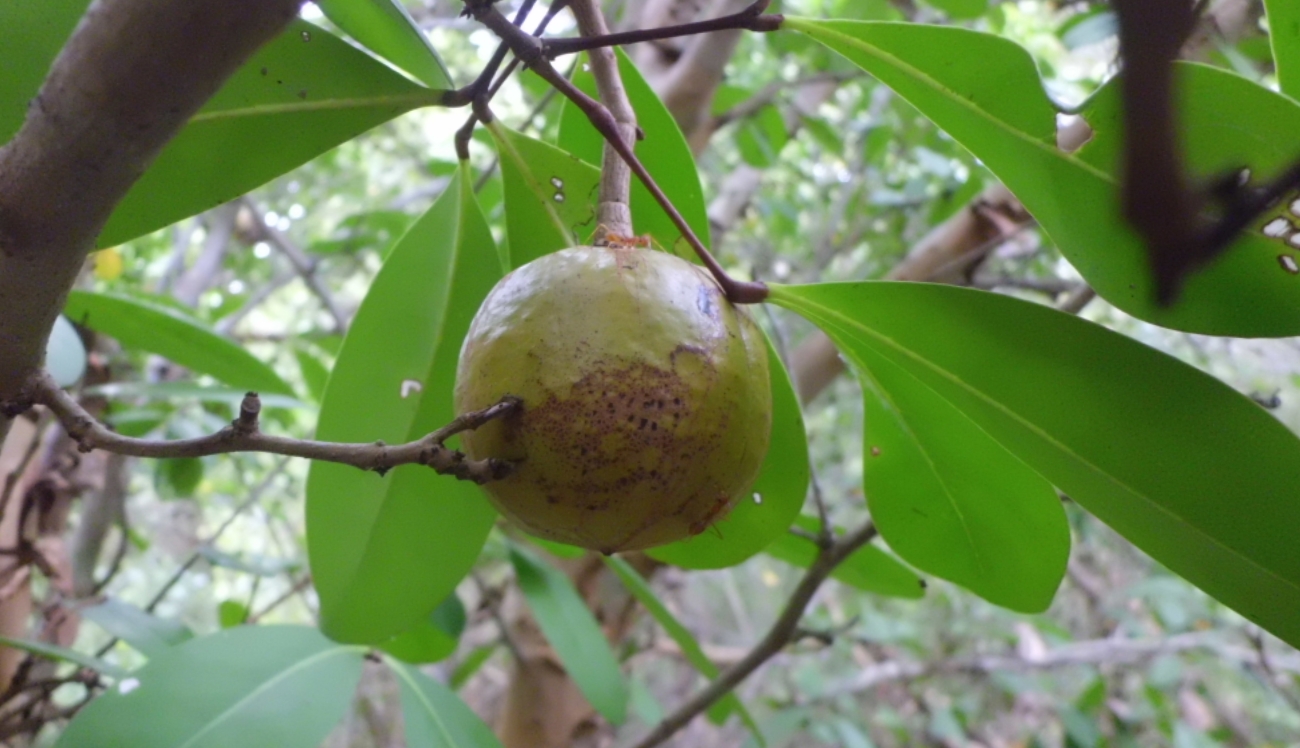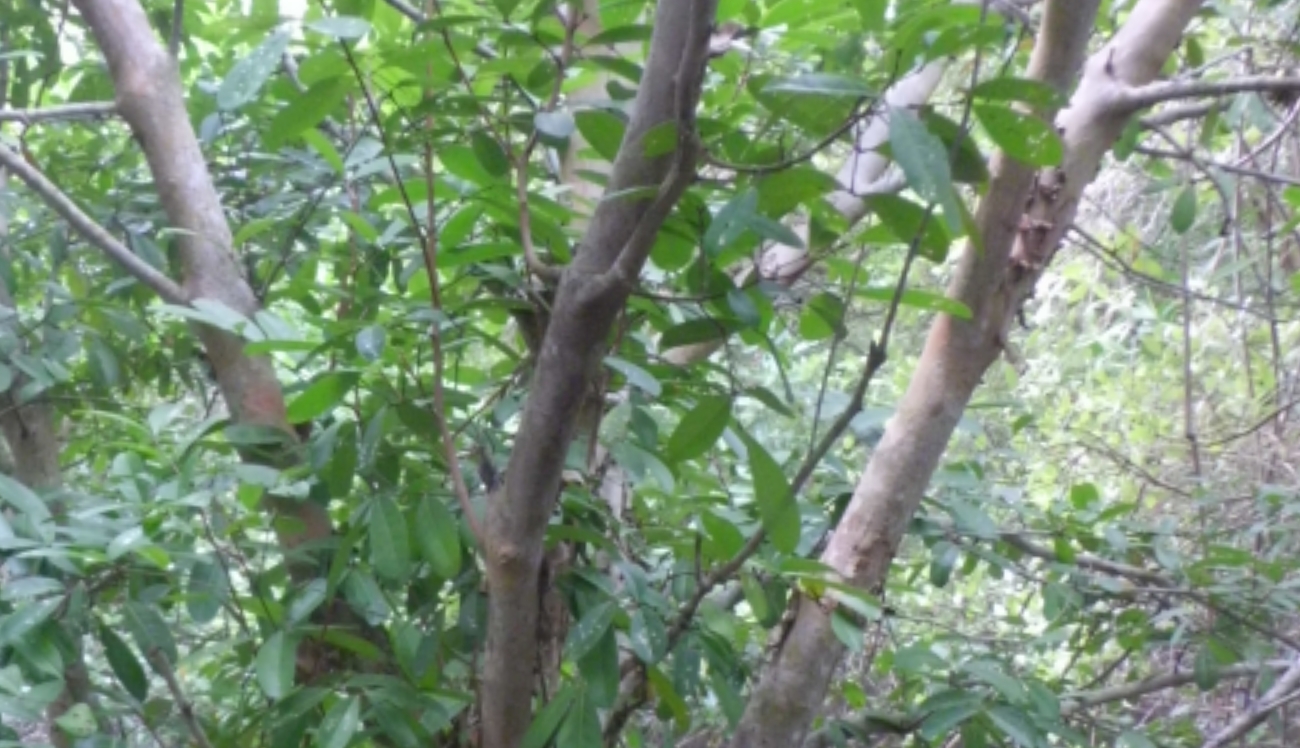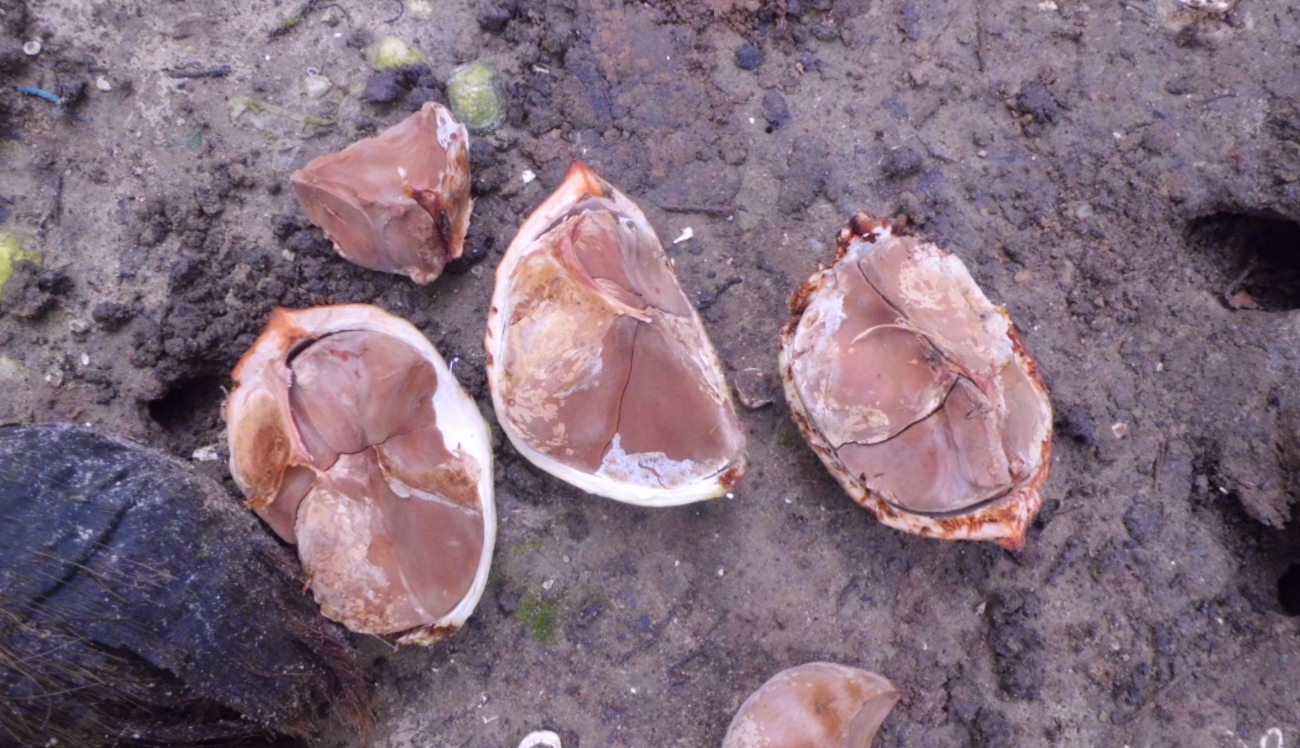





 Quick Facts
Quick Facts
 common name :
Mutti-kadol, kotalai, cannonball mangrove
common name :
Mutti-kadol, kotalai, cannonball mangrove
 Scientific Name :
Xylocarpus granatum
Scientific Name :
Xylocarpus granatum
 Kingdom :
Plantae}
Kingdom :
Plantae}
 Clade :
Rosids
Clade :
Rosids
 Order :
Sapindales
Order :
Sapindales
 Family :
Meliaceae
Family :
Meliaceae
 Genus :
Xylocarpus
Genus :
Xylocarpus
 Species :
X. granatum
Species :
X. granatum
 Conservation Status :
3
Conservation Status :
3
 Type of Mangrove :
True mangrove
Type of Mangrove :
True mangrove
 Type of Roots :
branched ribbon-like surface roots
Type of Roots :
branched ribbon-like surface roots
 General Characters
General Characters
shrub or tree that can grow from 5 to 15 metres tall, exceptionally to 20 metres[
 Other Characters
Other Characters
Heartwood reddish, darkening to a deep warm brown on exposure, usually sharply demarcated from the narrow, buff-coloured to silver-grey sapwood. Grain straight or slightly interlocked. Texture fine and even. Wood with darker streaks producing attractive watered-silk figure on tangential surfaces. Growth rings distinct or indistinct.Bark: thin, smooth, scaly with irregular flakes, whitish to yellow-brown, inner bark reddish pink.
 Features of Flower
Features of Flower
Inflorescence: an axillary thyrse up to 6 cm long, often forked with indistinct main axis.Flowers functionally unisexual, regular, 4-merous; pedicel 3–9 mm long, thickened near the calyx; calyx lobed to about the middle, lobes 1–3 mm long; petals free, oblong, 3.5–6.5 mm × 2–3 mm, creamy-white or pinkish; stamens 8, united into a tube 2–3.5 mm in diameter; disk well developed, 8-lobed, red; ovary superior, 4-celled, style short and thick, stigma large.
 Features of Fruits
Features of Fruits
Fruit a globose, pendulous, woody capsule 12–25 cm in diameter, weighing up to 3 kg, tardily dehiscing by 4 valves from apex, 6–20-seeded. Seeds: irregularly tetrahedral, up to 6 cm long, brown, with a corky seedcoat. Seedling with hypogeal germination, initially with scale leaves, first leaves simple.
 Leaf Arrangment
Leaf Arrangment
Leaves alternate, paripinnately compound, with 1–2(–3) pairs of leaflets; stipules absent; petiole and rachis up to 12 cm long; petiolules 2–11 mm long, thickened; leaflets elliptical or obovate, 4–12 cm × 2–6 cm, base cuneate, apex rounded, entire, leathery.
 Distribution
Distribution
Restricted to few location in the south and west coasts.Highest number of tree are found in Pambala area of the Chilaw lagoon
 Range
Range
Eastern tropical Africa, throughout southeast Asia to Australia and the Pacific Islands.
 Type of Roots
Type of Roots
branched ribbon-like surface roots
 IUCN Red List Status
IUCN Red List Status
